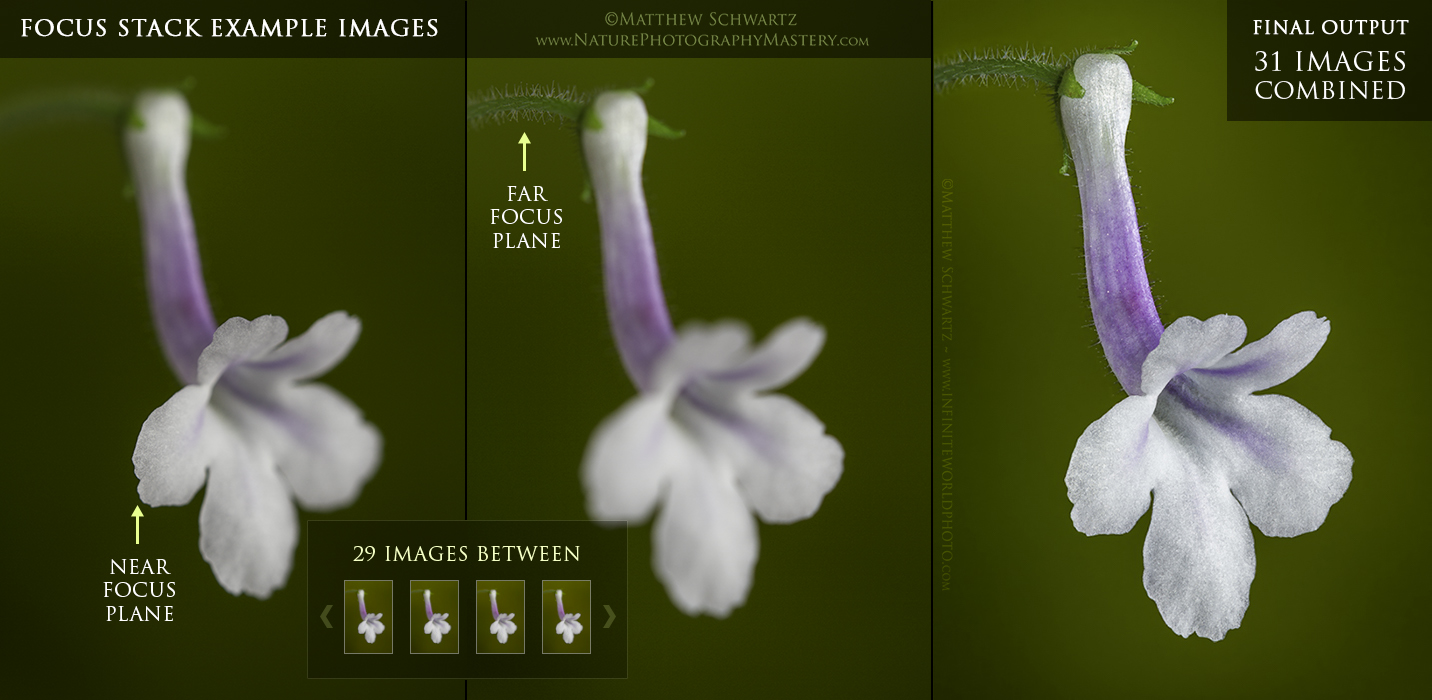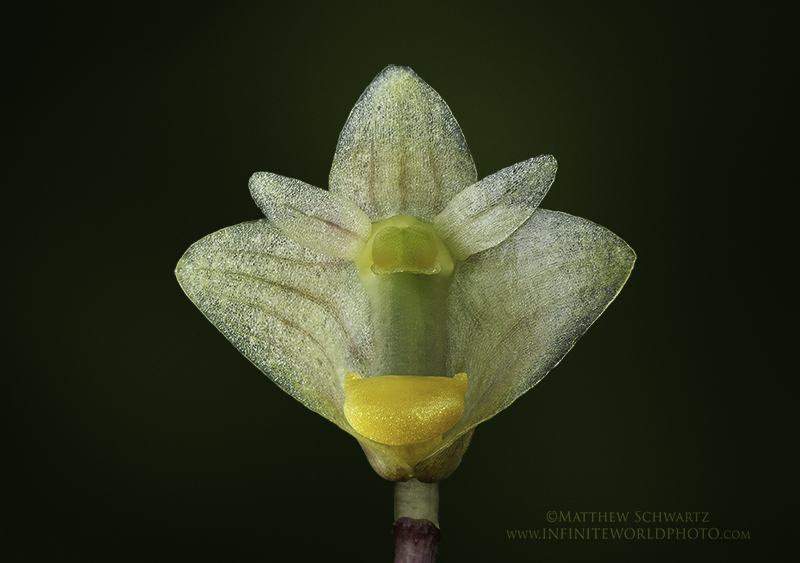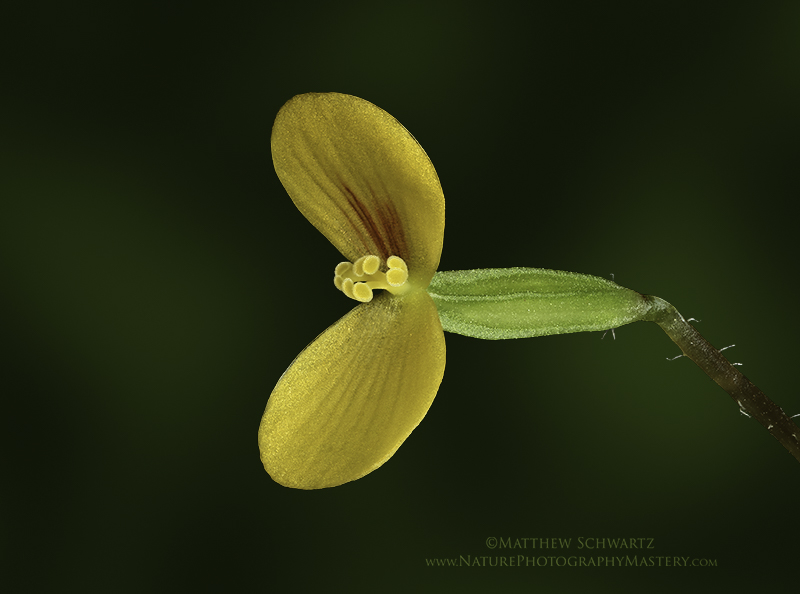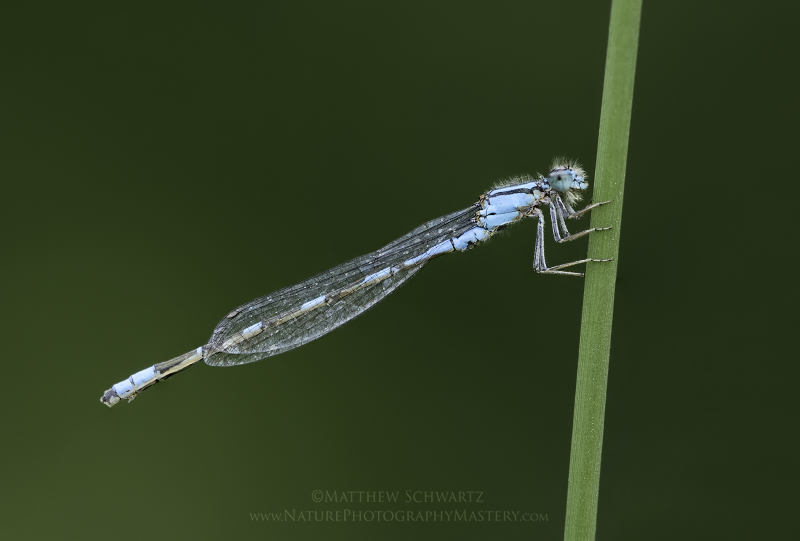Focus Stacking is a digital photography technique in which a sequence of images is taken with a relatively shallow depth of field, but with the focal plane of each image at a successively further distance within the subject matter. The sharpest pixels of each of the images are combined using post-processing techniques, resulting in a single, very sharp image, in focus from the nearest focal plane to the farthest. The final output of a focus stacked sequence is capable of producing a greater depth of field and sharpness than would be possible by stopping down the aperture for a single photograph, resulting in a higher quality, more visually stunning image.
Focus stacking is extremely useful for macro and close up work, especially at extremely high magnifications, because it eliminates diffraction, and allows incredible depth of field not normally possible.
Focus stacking requires specialized equipment and settings, and must be skillfully executed. It is also very time intensive throughout the entire process. Some subjects may prove difficult or impossible to focus stack. There are a number of other drawbacks, as noted in the summary section below.
Despite the drawbacks, focus stacking is worth the increased financial, time, and effort investments, due to the visually striking results and quality which can be obtained.
Focus Stacking Benefits
- Unlimited depth of field is possible
- Unparalleled sharpness throughout the entire depth of field can be obtained
- Prohibitive technical issues at high magnification can be circumvented, aiding macro photography
- Image degradation from diffraction is eliminated
- A cleaner background results, due to the wide aperture, compared to a stopped-down aperture
- Excellent sharpness and broad depth of field create a visually striking image
- Lower ISO and faster shutter speeds can be used for the individual images in the sequence
Focus Stacking Drawbacks
- Special equipment is usually necessary, resulting in more gear to buy, carry, setup, and use
- Special software is needed for creating the final image output, adding cost and learning curve
- Must be executed skillfully and precisely in the field, and in editing, to obtain the proper result
- Extremely significant increase in image creation time as compared to a single exposure photo
- For best quality, the output image will need touch up work through cloning and other edits
- Subject must be completely stationary for entire sequence, limiting some subjects and conditions
- Some subjects do not work well, due to overlapping elements and perspective changes
- More battery power is used for all equipment, such as camera and flash
- Sequences result in many images, which must be imported, managed, and stored
Focus Stacking Considerations
- Proper settings for camera, equipment, and software, will be determined through experience
- All images in sequence must have identical exposure, white balance, and alignment
- A tripod, cable release, and similar equipment are usually needed
- A macro rail, or automated motor driven rail, are usually needed for close up and macro work
- The selected aperture and magnification will affect the focal plane distance in sequential images
- If flash is used, it must be in Manual, and sufficient recharge time is needed between images
- Live subjects, such as insects, may prove extremely difficult to focus stack successfully
Example Focus Stacking Equipment For Fine Art Nature Photography
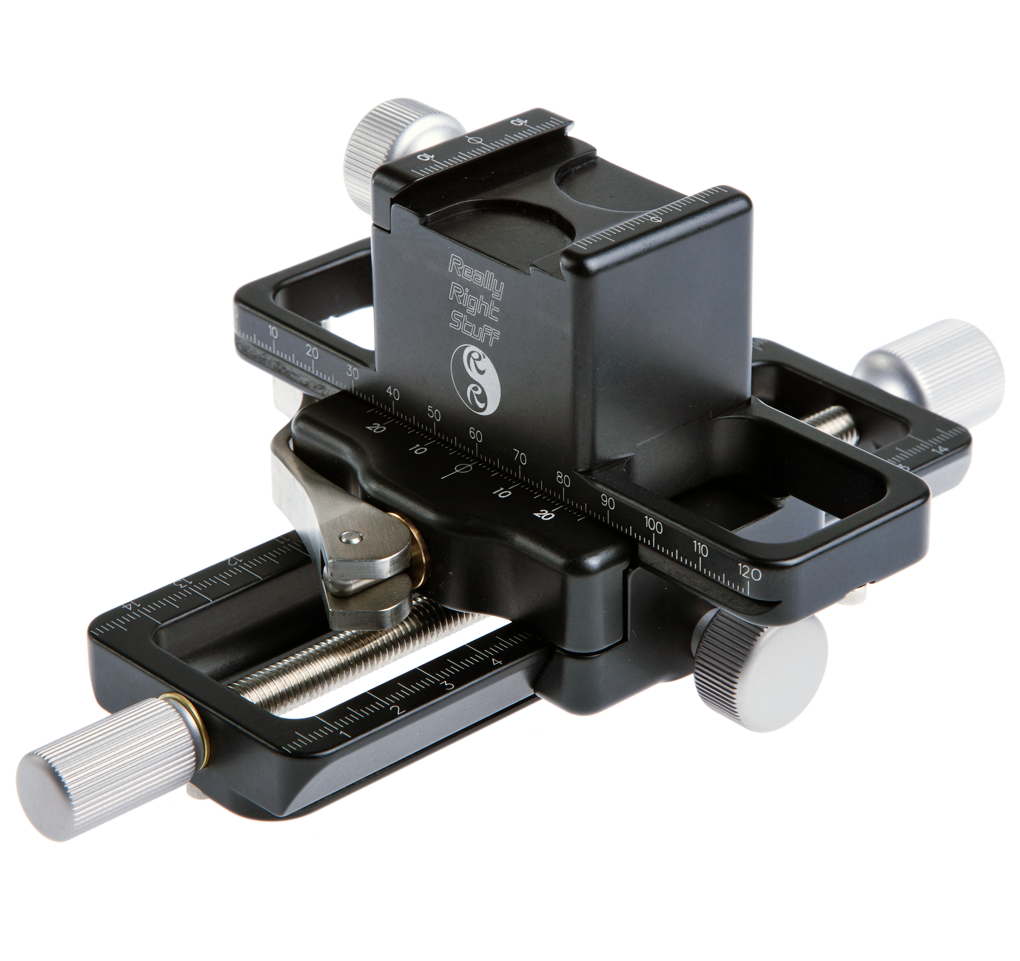
Really Right Stuff B150B-LMT-Pkg macro rail setup for collared macro lenses. A great quality macro rail for manual focusing work. If you can’t afford a motor-driven focus stacking rail, this is the next best thing. This version has a clamp on top which accepts a lens foot, perpendicular to the camera sensor plane, as opposed to a direct camera body plate which would be parallel.
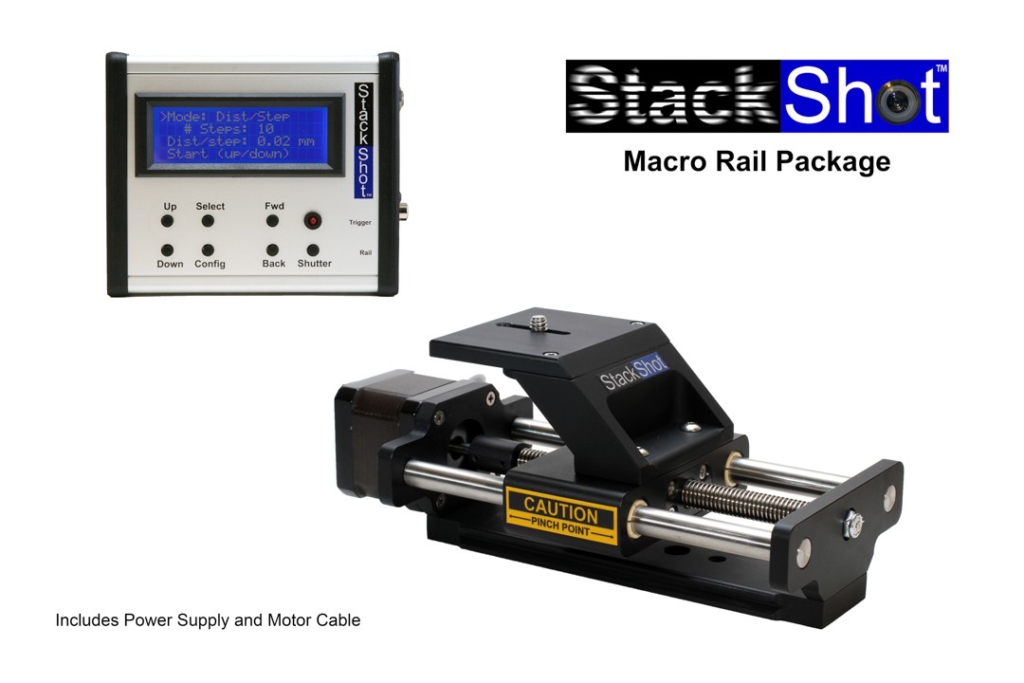
The StackShot is a motor-driven macro rail and digital controller. It allows automated, precise sequences of images to be captured for focus stacking and other uses. The focus step size is configurable from 100mm down to 2um (less than the width of a human hair!). This system is for serious macro photogaphers, and is much more expensive than a manual macro rail. For more info visit https://www.cognisys-inc.com
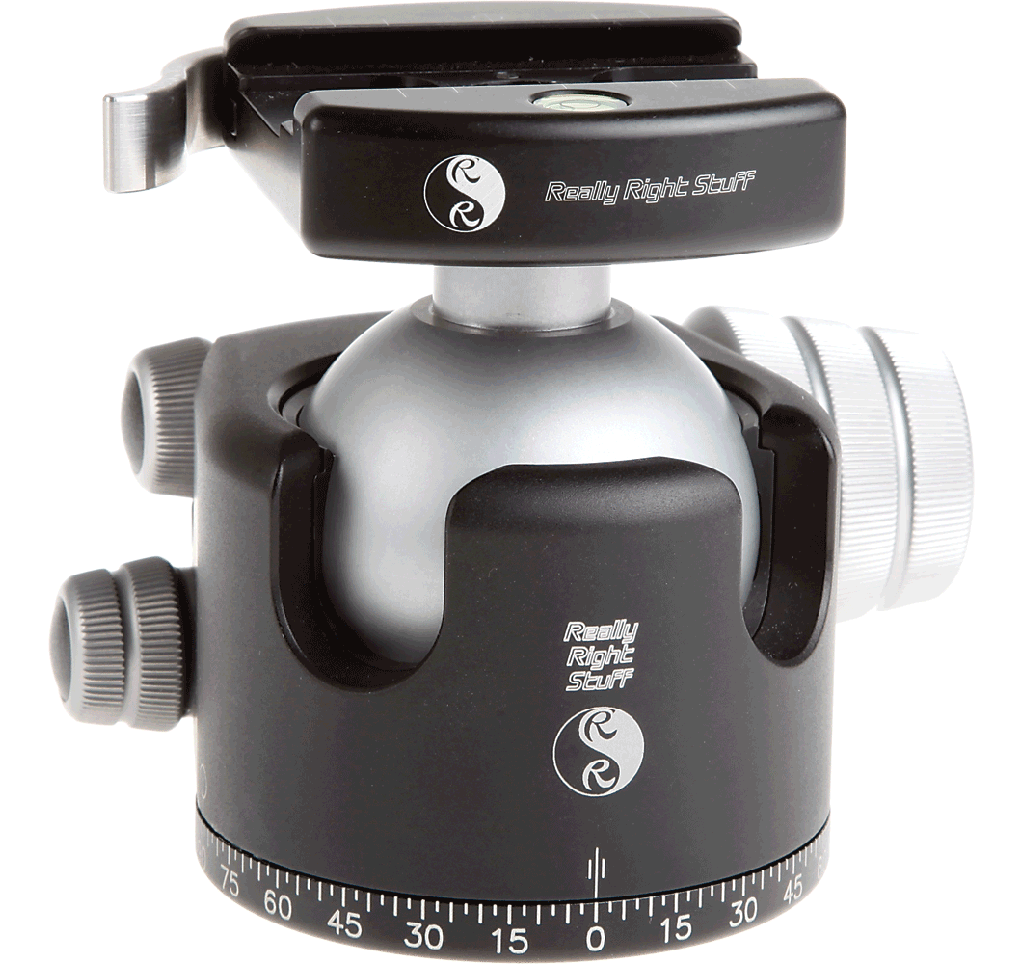
Really Right Stuff BH-55 Full Size Ballhead. An extremely strong and sturdy ballhead, excellent for heavy macro setups with a macro rail, long macro lens, and other equipment.

Wireless remote for triggering the camera shutter. An excellent way to reduce camera shake and get sharper images, when doing focus stacking manually using a macro rail.
Helicon Focus software, for combining your captured image sequences. There are many settings and parameters which can be adjusted, so you can get the best result for each stack and shooting conditions. Automated, tethered capture of stack sequences via USB connection to a computer is also possible with the Helicon Remote software.
Fine Art Nature Images Created With Focus Stacking
A damselfly, focus stacked from 5 images. When doing close up work of insects, it is rare to get the entire creature in sharp focus, due to the shallow depth of field which is caused by the high magnification. In this image, the entire insect is in sharp focus, from the nearest body part to the farthest.
Image © Matthew Schwartz

